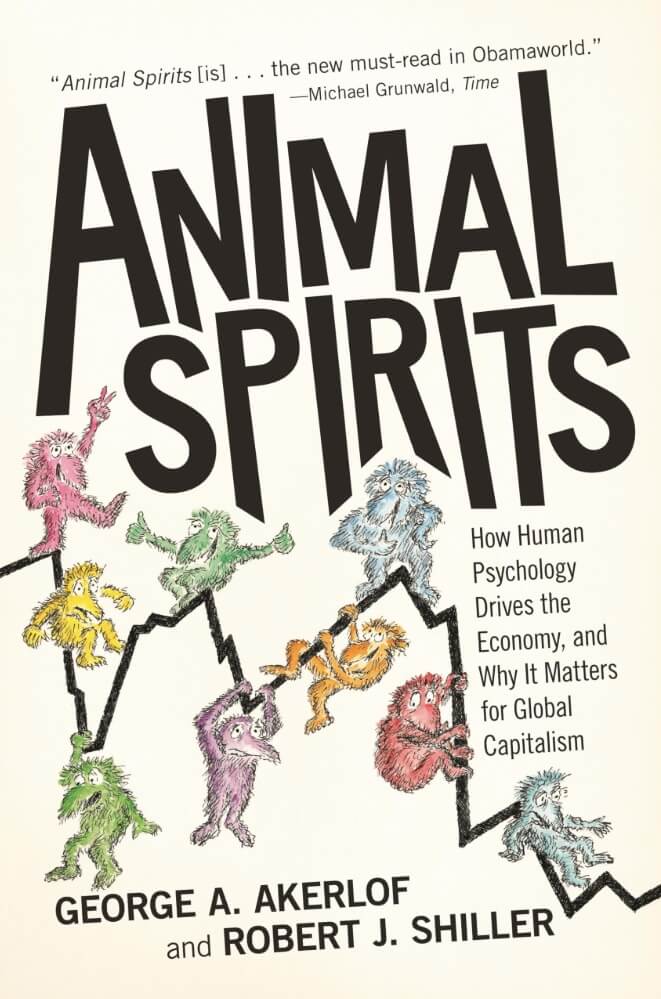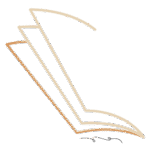Ever feel like the economy doesn’t make sense? That markets react to things that seem irrational? That confidence, fear, and even stories seem to move more money than facts? If so, Animal Spirits will feel like a revelation — and a relief.
In this groundbreaking book, Nobel laureates George Akerlof and Robert Shiller argue that standard economic models miss something crucial: human psychology. More specifically, they make the case that our moods, fears, confidence levels, and even sense of fairness — what John Maynard Keynes once called “animal spirits” — shape the economy just as much as interest rates or tax policy.
💡 Why This Book Still Hits Home
Originally published in the wake of the 2008 financial crisis, Animal Spirits feels even more relevant today. It explains why the economy sometimes goes haywire — and why classical economic theories can’t fully explain or fix it.
Markets don’t always behave logically, and neither do people. That’s not a flaw — it’s the foundation of real-world economics. Akerlof and Shiller invite us to embrace that truth, and in doing so, better understand everything from recessions to bubbles to unemployment.
🧠 What Are “Animal Spirits”?
The term “animal spirits” was coined by Keynes to describe the human emotions that drive economic decision-making — especially under uncertainty. These include:
⦁ Confidence: Our willingness to invest, hire, or spend depends on how optimistic we feel — not just data.
⦁ Fairness: People care deeply about what’s “just,” even if it goes against financial logic.
⦁ Corruption and Bad Faith: Dishonest behavior isn’t rare; it’s part of the economic landscape.
⦁ Money Illusion: People think in nominal, not real terms. For instance, they may resist a pay cut even if inflation makes the same pay worth more.
⦁ Stories: Narratives — not statistics — often determine public opinion and behavior.
These five psychological factors, the authors argue, are not just side effects — they are the core forces that move economies.
Structure of the Book
Animal Spirits is split into two parts:
Part 1: The Five Key Psychological Factors
Here, Akerlof and Shiller explore the behavioral roots of economic decisions. Each “spirit” is unpacked with clear examples, from salary negotiations to the real estate market.
For instance, they show how confidence rises and falls in waves, often without any rational cause — yet it influences hiring, investing, and policy decisions. Likewise, money illusion explains why people might riot over wage cuts even when inflation-adjusted pay stays constant.
Part 2: Rewriting the Economic Narrative
The second half asks big questions that traditional economics struggles to answer — and shows how animal spirits offer better explanations:
⦁ Why do economies fall into depression?
⦁ Why do central banks matter so much?
⦁ Why do real estate and stock markets boom and bust?
⦁ Why is there persistent unemployment?
Each answer comes not from spreadsheets or models, but from understanding human nature.
✅ Why You Should Read This Book
⦁ It Explains the Economy in Human Terms
Ever feel like economists speak a different language? Akerlof and Shiller bring economics down to earth. They talk about how real people behave, not how they should behave. That makes the book both refreshing and enlightening.
⦁ It Challenges Outdated Ideas
The book takes aim at classical and neoclassical economics, which assume rational agents and perfect information. Akerlof and Shiller argue these models are flawed not because of bad math — but because of bad assumptions about human behavior.
⦁ It Bridges Economics and Psychology
Think of Animal Spirits as the economic cousin to Daniel Kahneman’s Thinking, Fast and Slow. It applies behavioral insights to macroeconomics — something most economists avoided for too long.
🎯 Real-World Relevance
Whether it’s the 2008 financial meltdown, the COVID economic shock, or the meme-stock craze, Animal Spirits provides a framework for understanding it all.
⦁ Confidence cycles help explain why markets can crash on news that’s not objectively catastrophic.
⦁ Narratives explain why certain economic ideas go viral — like the belief that homeownership is always a good investment.
⦁ Fairness concerns help explain why wage stagnation fuels political anger and labor strikes.
In other words, if you want to understand why people do what they do in an economy, this book is essential.
⚠️ Where the Book May Be Challenging
⦁ It’s Behavioral, Not Technical
If you’re looking for detailed models, formulas, or investment strategies, you won’t find them here. This is more about frameworks and philosophy than algorithms.
⦁ It Can Feel Broad at Times
Because it tackles everything from wage theory to stock markets to banking, the book sometimes covers a lot of ground quickly. Some chapters feel like introductions rather than deep dives.
💬 What Readers and Critics Say
⦁ “A refreshing dose of realism” — Many readers applaud the authors for ditching ivory tower economics and talking about real-world behavior.
⦁ “A must-read for policymakers” — Reviewers point out that if central banks and governments took these ideas seriously, economic responses would be far more humane and effective.
⦁ “Eye-opening for non-economists” — Even readers with little background in economics find it readable and illuminating.
One reviewer captured the essence well: “This book doesn’t just explain the economy — it explains people.”
📈 Final Verdict: ★★★★☆ (4.5/5)
Animal Spirits is a vital, thought-provoking book that challenges conventional wisdom and restores humanity to economic thinking. It’s not just about charts and policies — it’s about emotions, instincts, and beliefs. And it makes the case that these “irrational” forces are actually central to how our economic world works.
For students, investors, policymakers, or just curious readers trying to make sense of today’s unpredictable world, Animal Spirits is a must-read. It won’t teach you how to pick stocks or time the market — but it will teach you why markets move the way they do, and how we might build a more stable, compassionate economic system.




